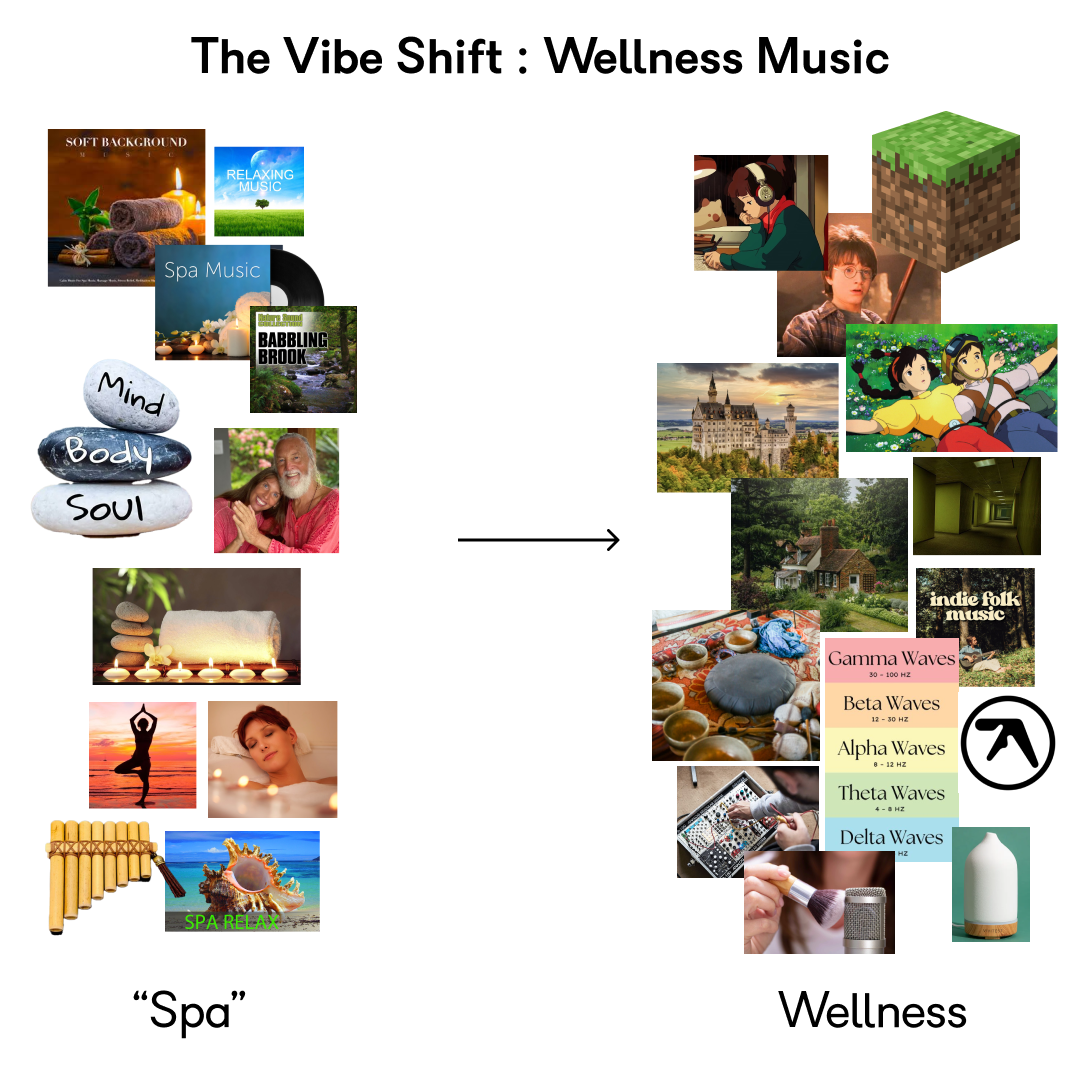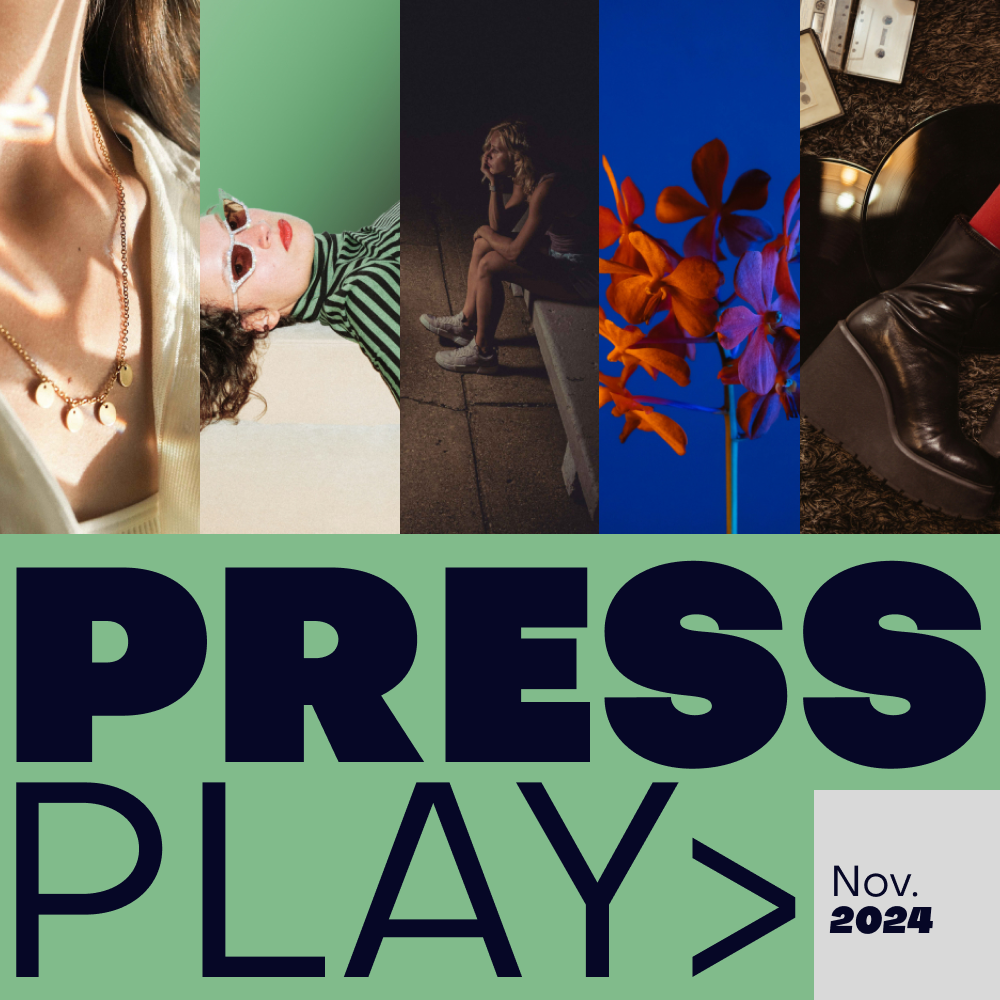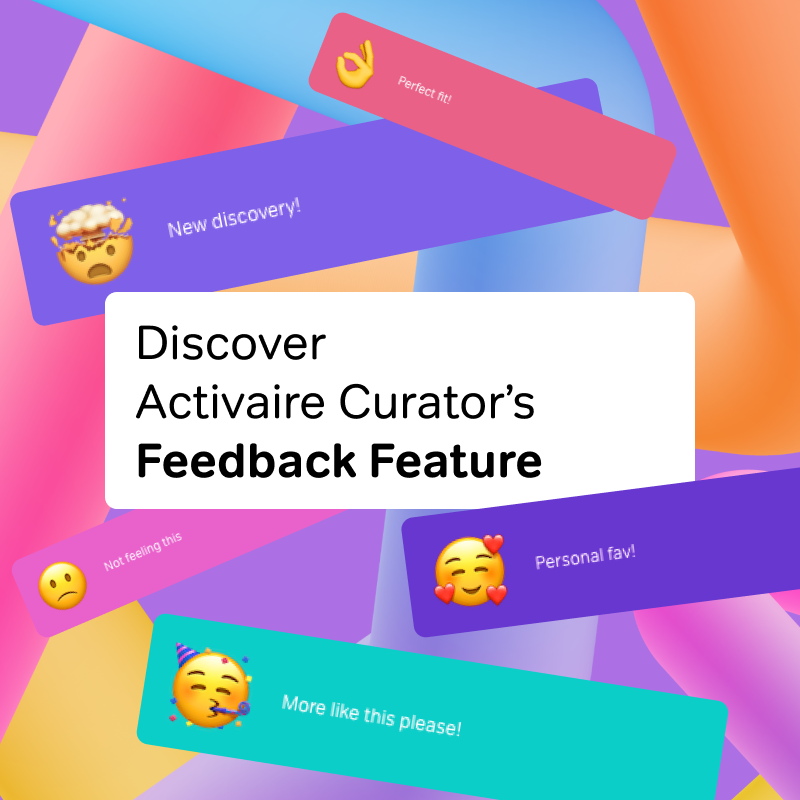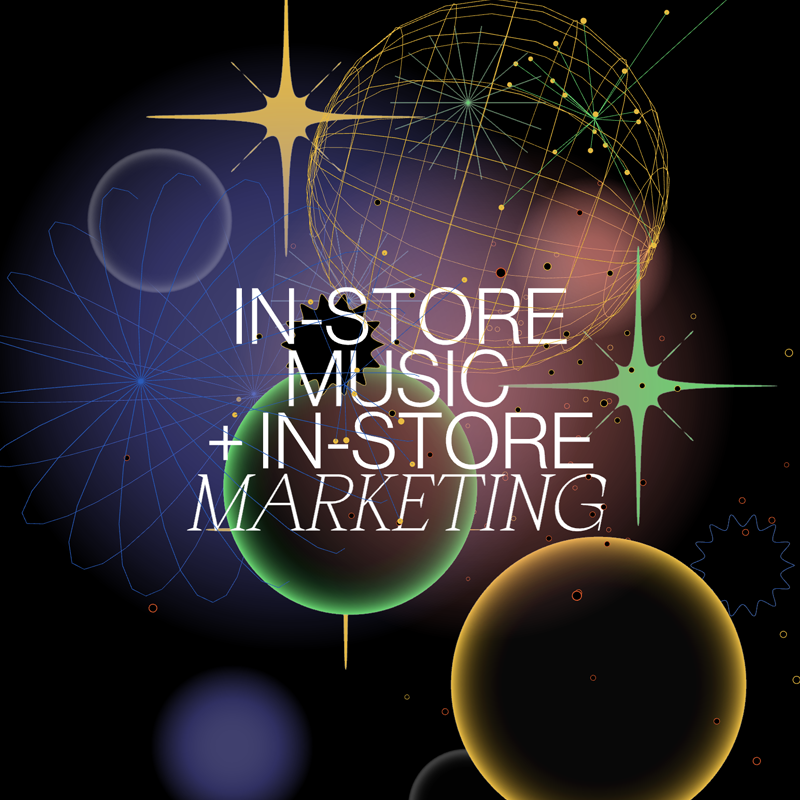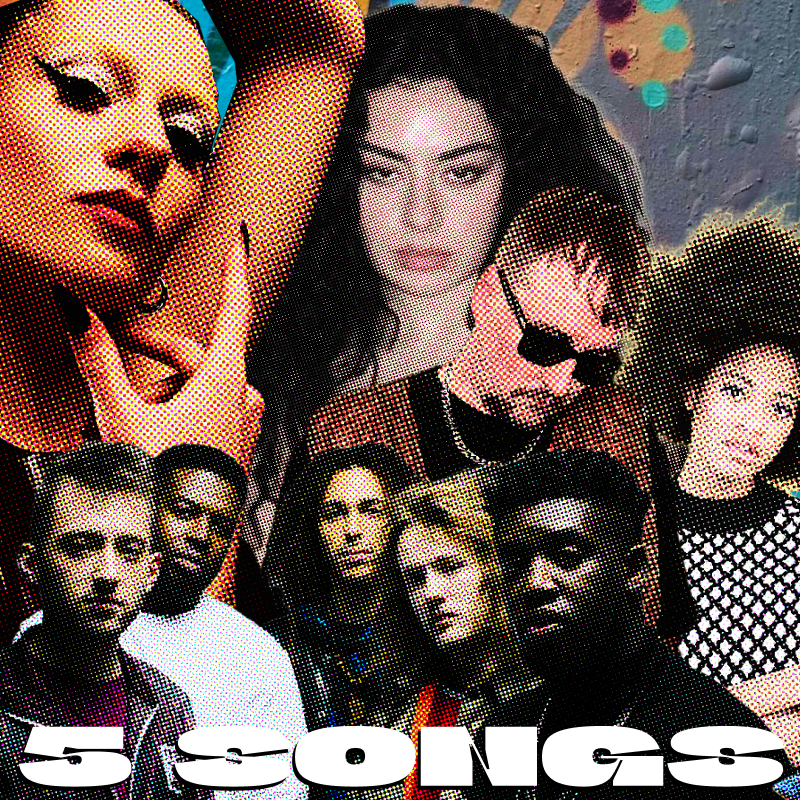Music for Business: How to Measure the Success of Your Music Strategy

What is “Music for Business?” There are many ways the music you play in your business differs from the music you listen to for personal enjoyment. At home or in your headphones, the music you select is entirely up to you. You are the final judge and jury. Now, think about the music you choose when you have friends for dinner. You might consider matching the music style with the type of food or be more partial to your guest’s taste in music than your own. You may want to play your current obsession or play it safe with something you know everyone will like. You want your dinner guests to get a sense of your personal brand but also feel comfortable with what’s playing. Music for business is similar to your dinner party, except you don’t know your customers personally, and their aspirations and expectations are often the deciding factor when it comes to spending money or leaving empty-handed.
Music for business is a soundtrack that expresses your brand’s ethos and the aspirational desires of your customers. Each song you select must address one or more of your business objectives. When considering music for business, personal taste takes a back seat to brand authenticity, customer experience, and boosting sales.
Implementing a music for business strategy, whether in a retail environment, a restaurant, or a service-oriented space, can significantly enhance the customer experience and reinforce your brand identity. However, simply playing music is not enough; to truly understand its effectiveness, you need to measure the success of your music for business strategy. By tracking the impact of your music, you can make informed adjustments that optimize the customer experience, boost engagement, and drive business results. This article will explore the key metrics and methods for measuring the success of your music for business strategy.
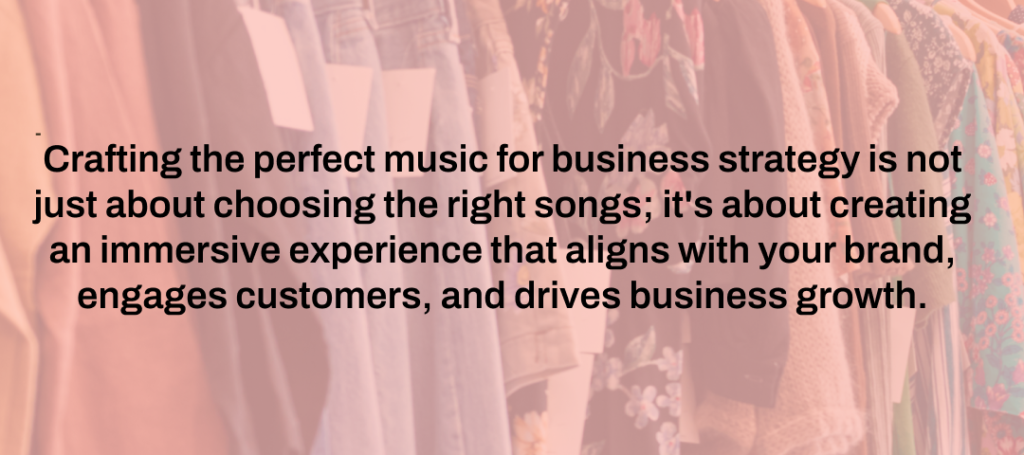
1. Define Clear Objectives and Key Performance Indicators (KPIs)
Before you can measure the success of your music for business strategy, you need to define clear objectives and identify the key performance indicators (KPIs) that align with these goals. Your objectives should be specific, measurable, achievable, relevant, and time-bound (SMART).
Common Objectives for a Music Strategy:
- Enhancing Customer Experience: Creating a pleasant and engaging atmosphere that encourages customers to stay longer and enjoy their visit.
- Increasing Dwell Time: Encouraging customers to spend more time in your store, which can lead to increased sales opportunities.
- Boosting Sales and Conversions: Directly influencing customer purchasing decisions through mood-enhancing or promotional music.
- Reinforcing Brand Identity: Ensuring that the music reflects the brand’s values and personality, creating a consistent brand experience across all locations.
Key Performance Indicators (KPIs):
- Customer Dwell Time: The amount of time customers spend in your store or business location.
- Sales Performance: Overall sales figures, including average transaction value and conversion rates.
- Customer Feedback and Satisfaction Scores: Ratings and feedback provided by customers regarding their experience.
- Brand Recall and Recognition: Customer awareness and recall of your brand in association with the music played.
- Foot Traffic: The number of customers entering the store, particularly during different times of the day or during special promotions.
By defining clear objectives and KPIs, you set a foundation for measuring the impact of your music for business strategy effectively.
2. Utilize Technology for Real-Time Monitoring and Analytics
Technology plays a crucial role in measuring the success of your music for business strategy. Modern music platforms offer real-time monitoring and analytics capabilities that provide valuable insights into how music affects customer behavior and store performance.
Key Technologies for Measuring Impact:
- In-Store Analytics Tools: Use in-store analytics tools to track customer behavior, such as foot traffic, dwell time, and heat maps showing the most and least trafficked areas of the store.
- POS Integration: Integrate your music strategy with your Point of Sale (POS) system to analyze the relationship between music and sales performance. This can help identify correlations between specific music choices and increased sales.
- Customer Feedback Kiosks and Digital Surveys: Set up feedback kiosks or use digital surveys to gather direct feedback from customers about their music experience. These tools can provide qualitative data that complements the quantitative insights from analytics tools.
- Music Platform Analytics: Utilize analytics features offered by your music service provider. These platforms often provide data on which playlists are most played, the volume levels set by staff, and how often music is changed or adjusted.
By leveraging technology, you can gather comprehensive data that helps you understand the impact of your music for business strategy on customer behavior and store performance.
3. Conduct Customer Surveys and Collect Feedback
Customer feedback is an invaluable resource for measuring the success of your music for business strategy. It provides direct insights into how your customers perceive and respond to the music you play.
Best Practices for Collecting Customer Feedback:
- Post-Visit Surveys: Send out post-visit surveys via email or SMS to gather feedback from customers about their in-store experience. Include questions specifically about the music, such as whether they found it enjoyable, appropriate, or aligned with the brand.
- In-Store Feedback Stations: Set up in-store feedback stations where customers can quickly provide feedback about their experience. Make sure the process is quick and easy to encourage participation.
- Incentivize Feedback: Offer incentives such as discounts or entry into a prize draw to encourage customers to provide feedback. This can increase response rates and provide a larger sample size for more accurate analysis.
- Monitor Social Media and Online Reviews: Track social media mentions and online reviews to gather unsolicited feedback. Customers often share their experiences online, providing valuable insights into their perceptions of the music in your store.
Customer feedback helps you understand the qualitative aspects of your music for business strategy, providing context for the quantitative data gathered through technology.
4. Analyze the Relationship Between Music and Sales Performance
One of the most direct ways to measure the success of your music for business strategy is by analyzing its impact on sales performance. Music can influence purchasing behavior by creating a specific atmosphere that encourages spending.
Strategies for Analyzing Sales Performance:
- Track Sales During Different Music Playlists: Compare sales data when different playlists are played. Identify which types of music or specific songs are associated with higher sales or increased average transaction values.
- Analyze Time-Based Sales Trends: Use dayparting data to analyze how sales performance varies at different times of the day and how music influences these trends. For example, does upbeat music during peak shopping hours correlate with increased sales?
- Measure Impact During Promotions: During specific promotions, track the impact of promotional music on sales performance. Determine whether music aligned with a promotion, such as a flash sale or seasonal event, drives higher conversion rates.
By analyzing the relationship between music and sales performance, you can make data-driven decisions to optimize your music for business strategy for maximum financial impact.
5. Conduct A/B Testing to Optimize Music Choices
A/B testing is a powerful method for measuring the success of different music choices and optimizing your strategy accordingly. By comparing the performance of two or more music options, you can determine which works best for your business objectives.
How to Conduct A/B Testing with Music:
- Choose Variables to Test: Select specific variables to test, such as different genres, playlists, volume levels, or times of day when certain music is played.
- Implement Controlled Tests: Play different music options in comparable conditions and locations to minimize external influences on the results. For example, test different playlists in similar stores with similar customer demographics.
- Measure and Compare Results: Use your predefined KPIs to measure the impact of each music choice. Compare the results to determine which music strategy leads to better customer engagement, higher sales, or improved customer satisfaction.
- Iterate and Optimize: Use the insights gained from A/B testing to refine your music strategy. Continuously test new options and make adjustments based on the results to optimize the customer experience and business performance.
A/B testing allows you to make data-driven decisions about your music for business strategy, ensuring that it aligns with your business objectives and resonates with your customers.
6. Monitor Long-Term Trends and Adjust Accordingly
Music strategies should not be static. To ensure continued success, it’s important to monitor long-term trends and adjust your strategy based on evolving customer preferences, seasonal changes, and market dynamics.
Long-Term Monitoring Strategies:
- Track Seasonal and Yearly Trends: Monitor how customer behavior and sales performance vary with different music choices over longer periods, such as seasonally or annually. Adjust your music strategy to align with these trends.
- Stay Updated on Music Trends: Keep an eye on broader music trends and customer preferences. Update your playlists regularly to keep the music fresh and relevant, reflecting the latest trends while staying true to your brand identity.
- Evaluate Strategy Effectiveness Regularly: Conduct regular evaluations of your music strategy to assess its effectiveness. This could be done quarterly or biannually, using all the data and insights collected over time.
By monitoring long-term trends and making regular adjustments, you can ensure that your music for business strategy remains effective and continues to support your business goals.
We’re music for business experts
Measuring the success of your music for business strategy is essential to maximizing its impact on customer experience and overall business performance. By defining clear objectives and KPIs, leveraging technology for real-time monitoring, gathering customer feedback, analyzing sales performance, conducting A/B testing, and monitoring long-term trends, you can effectively track the impact of your music strategy. These methods empower you to make data-driven decisions, optimize your music choices, and ensure your strategy resonates with customers while supporting your business goals.
However, managing a comprehensive music for business strategy requires more than just good intentions and occasional adjustments. It demands expertise in curating the right soundtracks that align with your brand, analyzing customer behavior, and continuously optimizing for better results. This is where a specialized service like Activaire comes in. Activaire provides tailored music solutions that align perfectly with your brand’s identity and customer aspirations. Their platform offers robust analytics, real-time monitoring, and expert curation, making it easier for businesses to implement and refine a successful music strategy.
By partnering with Activaire, you can transform your music for business approach from a simple background feature into a powerful tool that enhances customer experience, reinforces brand identity, and drives sales. Let Activaire help you create a soundtrack that not only reflects your brand’s ethos but also meets your business objectives. With Activaire’s expertise and innovative solutions, you can ensure your music strategy is not just heard but truly felt by your customers, making a lasting impact on your business success.

